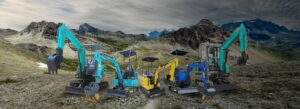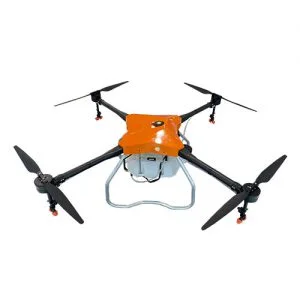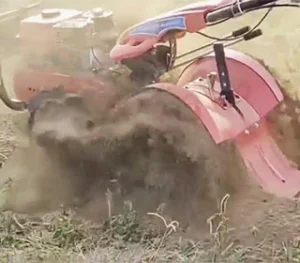How Precision Agriculture Drones Improve Crop Yields and Reduce Costs
Welcome to My Blog!
Before we dive into the content, I’d love for you to join me on my social media platforms where I share more insights, engage with the community, and post updates. Here’s how you can connect with me:
Facebook:https://www.facebook.com/profile.php?id=61557298070472
Now, let’s get started on our journey together. I hope you find the content here insightful, engaging, and valuable.
Introduction
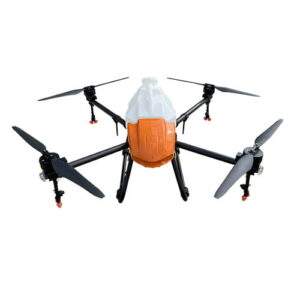
In the ever-evolving world of agriculture, technology plays a pivotal role in enhancing productivity and efficiency. One of the most innovative advancements in recent years is the use of precision agriculture drones. These high-tech devices are transforming traditional farming practices by offering unprecedented insights into crop health, optimizing resource usage, and ultimately boosting crop yields while reducing operational costs. This comprehensive guide will explore how precision agriculture drones are revolutionizing the agricultural industry, their benefits, and practical applications.
What Are Precision Agriculture Drones?
Definition and Functionality
Precision agriculture drones are unmanned aerial vehicles (UAVs) equipped with advanced sensors, cameras, and imaging technologies designed for agricultural use. These drones fly over agricultural fields to collect data and provide real-time insights into crop conditions. Key functionalities include:
- High-Resolution Imaging: Capturing detailed images of crops using high-resolution cameras and multispectral sensors.
- Data Collection: Gathering various types of data, including crop health, soil moisture levels, and pest presence.
- Mapping and Analysis: Creating detailed maps and performing analysis to guide farming decisions.
Components of Precision Agriculture Drones
- Flight Controller: Manages the drone’s flight path and stability.
- Camera and Sensors: Capture visual and multispectral data.
- GPS System: Provides precise location data for accurate mapping.
- Data Storage: Records collected data for later analysis.
How Precision Agriculture Drones Improve Crop Yields
Enhanced Crop Monitoring
Precision agriculture drones offer superior crop monitoring capabilities compared to traditional methods. By providing high-resolution imagery and multispectral data, these drones enable farmers to:
- Identify Crop Stress: Detect signs of stress or disease early by analyzing images and data.
- Assess Crop Growth: Monitor crop development and growth patterns to optimize inputs.
Targeted Interventions
With the data collected by drones, farmers can make informed decisions about where and when to apply resources. This targeted approach helps:
- Optimize Fertilizer Use: Apply fertilizers only where needed, based on nutrient deficiency maps.
- Efficient Pest Control: Focus pest control efforts on affected areas, reducing the amount of pesticide used.
Precision Planting
Precision agriculture drones can assist in precision planting by providing detailed field maps and crop health data. This helps in:
- Planting Density: Adjusting planting density for optimal growth and yield.
- Row Spacing: Ensuring consistent row spacing to maximize light and nutrient absorption.
How Precision Agriculture Drones Reduce Costs
Reduced Resource Wastage
One of the most significant cost-saving benefits of precision agriculture drones is the reduction in resource wastage. By using drone data to:
- Optimize Water Usage: Apply irrigation only where necessary, based on soil moisture data.
- Minimize Chemical Inputs: Apply pesticides and fertilizers more precisely, reducing the overall amount used.
Increased Efficiency
Precision agriculture drones enhance operational efficiency in several ways:
- Faster Data Collection: Quickly cover large areas and gather data that would take significantly longer to collect manually.
- Improved Decision-Making: Enable more informed and timely decisions, reducing the need for reapplication of resources.
Labor Cost Savings
The use of drones reduces the need for manual field inspections and data collection, leading to:
- Lower Labor Costs: Reduce the number of hours required for fieldwork and inspections.
- Enhanced Productivity: Allow farmers to focus on other critical tasks, improving overall productivity.
Table: Benefits of Precision Agriculture Drones
| Benefit | Description |
|---|---|
| Enhanced Crop Monitoring | Provides high-resolution images and multispectral data for detailed analysis of crop health. |
| Targeted Interventions | Allows for precise application of fertilizers and pesticides, reducing wastage. |
| Precision Planting | Optimizes planting density and row spacing for better crop growth. |
| Reduced Resource Wastage | Minimizes water, fertilizer, and pesticide use through targeted application. |
| Increased Efficiency | Speeds up data collection and decision-making processes. |
| Labor Cost Savings | Decreases the need for manual labor and field inspections. |
Practical Applications of Precision Agriculture Drones
Crop Health Assessment
Drones equipped with multispectral sensors can assess crop health by capturing data across different wavelengths. This information helps farmers:
- Detect Early Signs of Disease: Identify potential issues before they spread.
- Monitor Plant Vigor: Track the overall health and growth of crops.
Soil Analysis
Precision agriculture drones can provide valuable insights into soil conditions by:
- Mapping Soil Moisture: Identifying areas with varying moisture levels for targeted irrigation.
- Analyzing Soil Health: Assessing soil conditions to guide fertilization strategies.
Field Mapping and Planning
Drones create detailed maps of agricultural fields, which are essential for:
- Creating Prescription Maps: Developing maps for variable rate application of inputs.
- Planning Field Operations: Organizing planting, harvesting, and other field activities more efficiently.
Case Study: Precision Agriculture Drones in Action
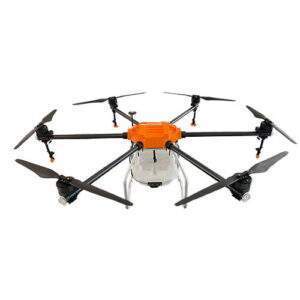
Background
A large-scale corn farm implemented precision agriculture drones to improve crop management and reduce costs. The farm faced challenges with inconsistent crop growth and high input costs.
Implementation
- Drones: Deployed drones equipped with high-resolution and multispectral cameras.
- Data Collection: Collected data on crop health, soil moisture, and nutrient levels.
- Analysis: Analyzed data to create detailed maps and guide input applications.
Results
- Increased Yields: Enhanced crop health monitoring led to a 15% increase in corn yields.
- Cost Savings: Reduced fertilizer and pesticide use by 20%, saving approximately $50,000 annually.
- Improved Efficiency: Data-driven decisions improved overall farm management and productivity.
Conclusion
Precision agriculture drones represent a significant advancement in agricultural technology, offering numerous benefits for improving crop yields and reducing costs. By providing detailed insights into crop health, optimizing resource usage, and enhancing operational efficiency, these drones are transforming the way farmers manage their fields. The ability to make data-driven decisions and reduce wastage not only improves productivity but also contributes to more sustainable farming practices.
As the technology continues to evolve, the potential applications and benefits of precision agriculture drones will likely expand, offering even greater opportunities for enhancing agricultural operations. For farmers and agricultural professionals looking to stay ahead of the curve, adopting precision agriculture drones is a strategic move towards achieving higher yields and cost savings.
FAQ
What are the main advantages of using precision agriculture drones?
Precision agriculture drones offer enhanced crop monitoring, targeted interventions, precision planting, reduced resource wastage, increased efficiency, and labor cost savings. These benefits contribute to improved crop yields and lower operational costs.
How do precision agriculture drones improve crop health monitoring?
Drones equipped with high-resolution cameras and multispectral sensors provide detailed images and data on crop health. This allows farmers to detect early signs of disease, assess plant vigor, and monitor growth patterns.
Can precision agriculture drones reduce water usage?
Yes, precision agriculture drones can help optimize water usage by providing data on soil moisture levels. This enables farmers to apply irrigation more precisely, reducing water wastage and improving efficiency.
How do precision agriculture drones assist with soil analysis?
Drones can map soil moisture and analyze soil health by capturing data across different wavelengths. This information helps farmers make informed decisions about irrigation and fertilization.
Are precision agriculture drones cost-effective?
While the initial investment in precision agriculture drones can be significant, the long-term cost savings from reduced resource wastage, increased efficiency, and labor cost reductions often make them a cost-effective solution for modern farming.

